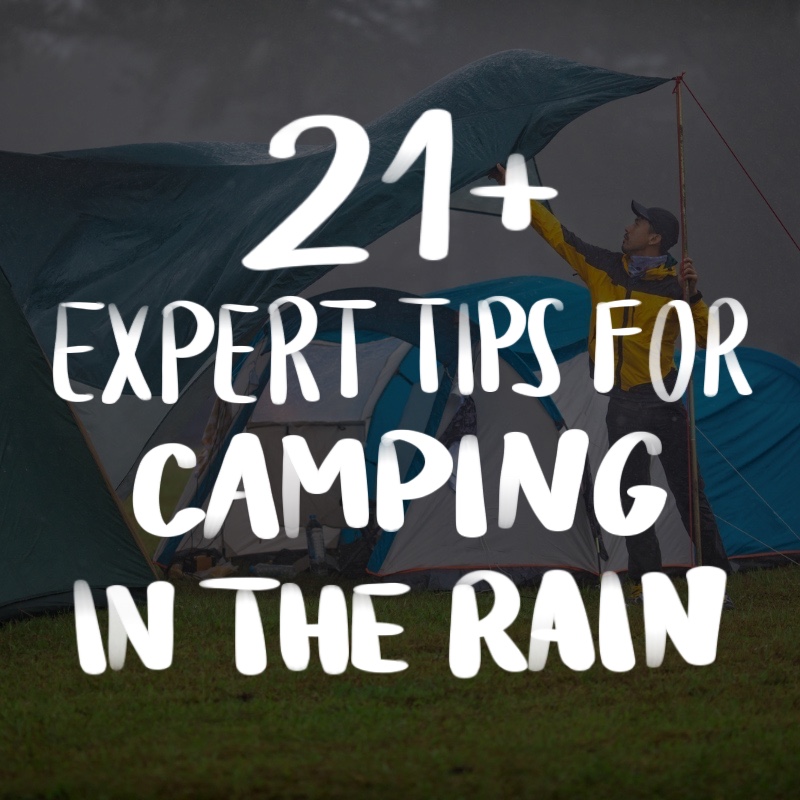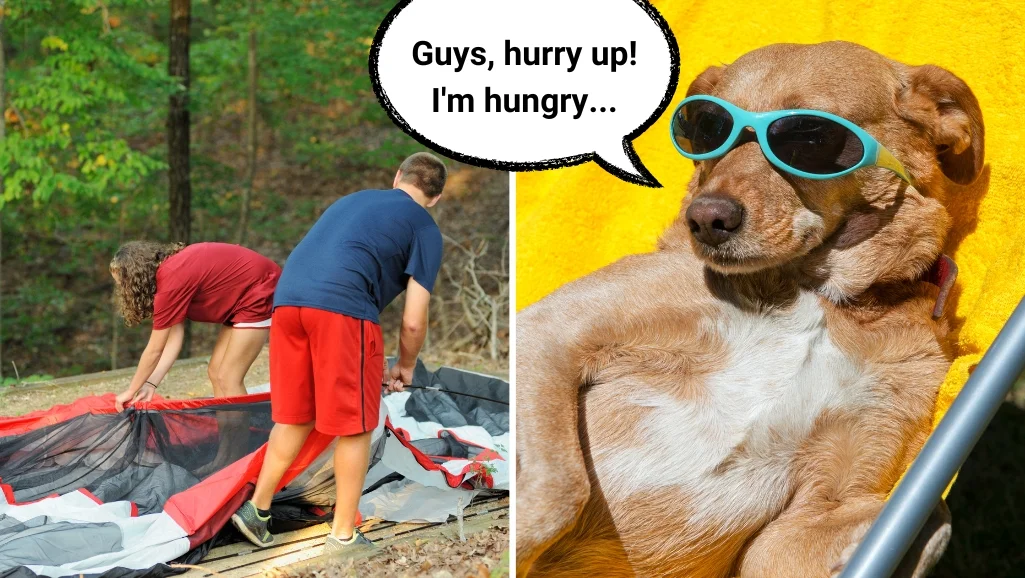
Camping with dogs is a fantastic way to strengthen the bond between you and your four-legged friend.
Camping trips can be a rewarding experience for both of you. Whether exploring scenic trails, lounging by the campsite, or enjoying the great outdoors, there’s no better way to build a relationship with your dog than by hitting the road and experiencing nature together.
However, before you set out on your camping adventure, it’s essential to prepare well, bring the right gear, and head to a safe and sound next experience for you and your beloved pet.
From sturdy leashes and high-absorbency towels to poop bags and warm clothing, there are many essentials to think of when camping with dogs.
In the text, you can look closely at the essential items and tips to remember when experiencing the great outdoors with your canine companion.
So, no matter the level of your experience, new insights are always welcomed, and if you’re an absolute beginner to it, then this article will be of particular value to you.
However, if you have been to many trails and camps with your dog and are an experienced pawrent, then take a moment to check out these tips because you might find something new!
Either way, prepare to take some notes, as we’ve created this unique checklist for you at any time.
Table of Contents
General Guidelines
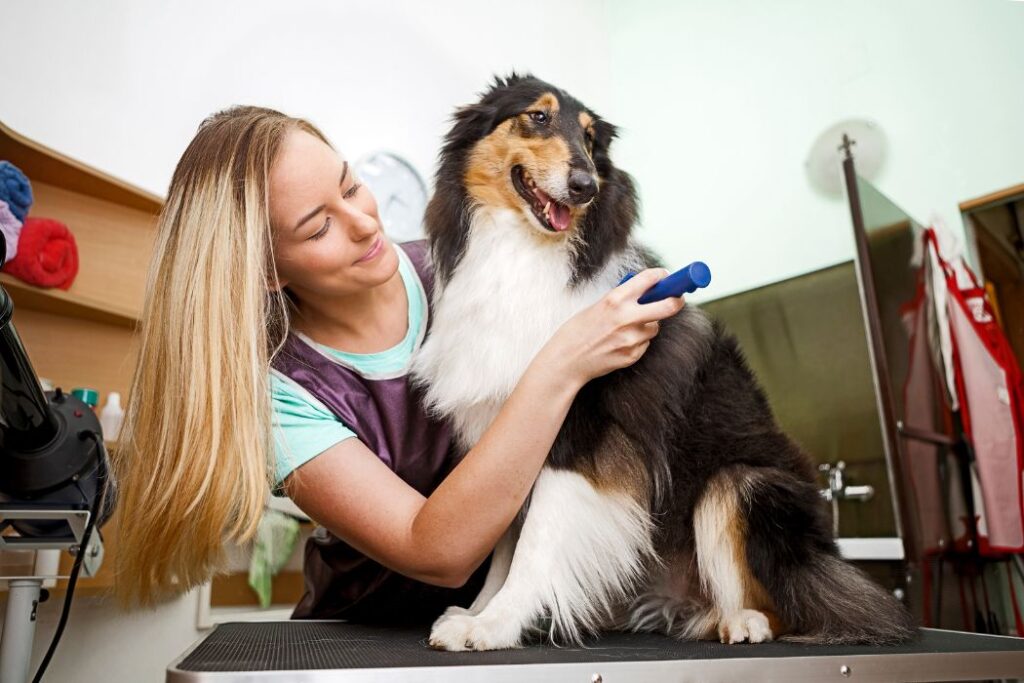
Do the Vet Check Before the Camping Trip
Taking your dog for a health check-up before heading off to the middle of nowhere is an intelligent and reasonable thing to do. It is necessary to ensure your pet’s health and safety during your outdoor adventure.
These are the most critical examinations you should provide for your dog:
- Parasite control: the vet can provide preventive measures to protect your dog against parasites that can hurt your dog and you.
- Emergency preparedness: inform yourself about the potential outdoor dangers and what you can do to prevent it
- General health check-up: take your dog to the vet regularly, but pay special attention to this point if your dog has any known conditions you must consider before going on a camping adventure.
Be Informed About Campsite Regulations
Read their guidelines well if you’re about to visit a particular dog-friendly campsite. Campsite regulations contain essential information about the rules and restrictions you must follow, including what you can and cannot do while camping.
Many dog-friendly campgrounds restrict the number of pets allowed or may prohibit specific breeds of dogs. This applies to many national parks, local parks, or other restricted areas.
Knowing these restrictions is essential to ensure you can bring your furry companion along. Many national parks have their regulations, and it’s essential to get to know them well.
Keep Your Dog In Sight
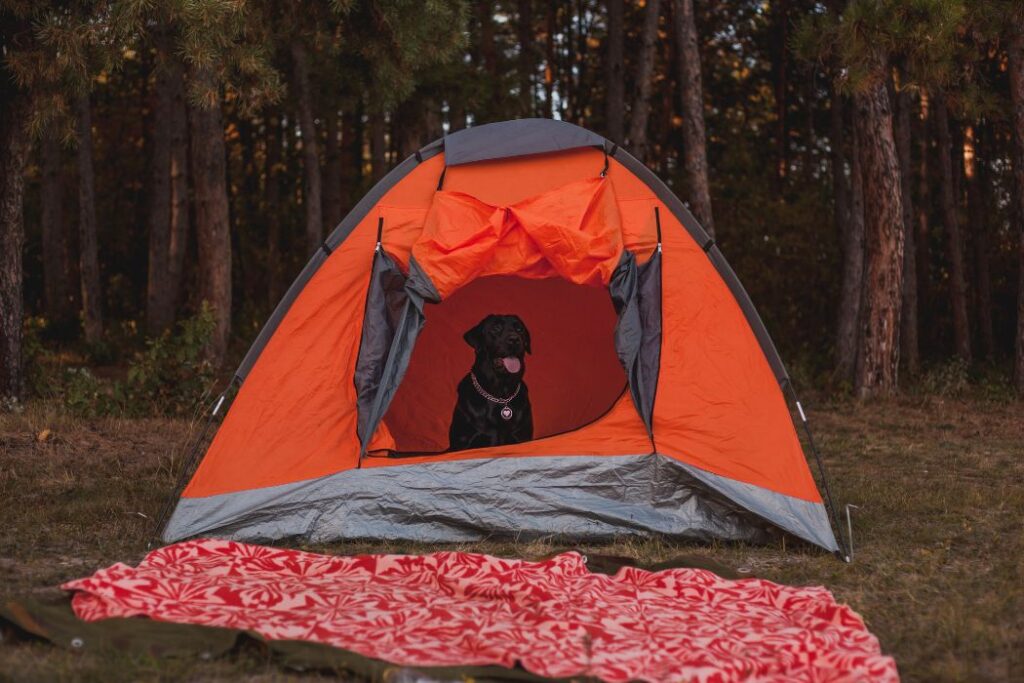
Outdoor adventures can expose your furry friend to new and potentially hazardous surroundings, such as rocky terrain, streams, and wildlife.
Dogs can get lost or injured or encounter dangerous animals without proper supervision. This also means that you shouldn’t leave dog food unsupervised for wildlife or other pets to find it.
Also, your dog may quickly become overheated or suffer from hypothermia without proper care. Keeping a dog hydrated and storing dog food above the ground would be best.
And last but not least, dogs can become fearful or anxious when in new environments, especially if left alone.
Do everything possible to provide your dog with safety, comfort, and well-being.
Stay Away from Wildlife
Always keep a safe distance between your dog and wildlife when camping. Wild animals, such as bears, mountain lions, or raccoons, can see dogs as a threat and may attack in self-defense.
Keeping distance can help prevent conflicts between your dog and wildlife and ensure safety for both sides.
Additionally, some wild animals can carry diseases that can be transmitted to your dog, so you need to do everything to reduce that risk.
Taking these precautions can help ensure the safety of your pet and other dogs’ wildlife and enjoy a peaceful and harmonious camping experience.
Bring the Proper Dog Food

When planning camping with your dog, bring high-quality, nutrient-dense dog food that is easy to transport and store.
Dog camping requires food specifically designed for active dogs, as these tend to have high protein and fat content to support your dog’s energy needs.
Consider freeze-dried or dehydrated dog food because they are lightweight, easy to pack, and have a long shelf life. Also, try keeping it fresh and secure it away from wildlife.
Create Your Checklist
You know the best what your dog needs. Scroll around the internet for some helpful checklists, and eventually, you will learn which items to add or remove from them.
By preparing in advance and bringing the necessary equipment, you can properly care for your dog while camping.
This whole article can be used as a general checklist of things you must take care of in advance. As we continue, make sure to take notes and start creating your checklist while you’re reading this.
Keep Your Dog Out of Strangers’ Campsites
Let me be clear about this: this isn’t necessary to do. But it’s essential to be respectful and considerate of fellow campers and follow the campsite’s rules and regulations.
Here’s how to do it:
- Keep your dog leashed
- Respect quiet hours
- Clean up after your dog
- Be mindful of others; not everyone may be comfortable around dogs
Following these instructions ensures a safe, respectful, and enjoyable experience for you, your dog, and other people in the camp.
Check Whether the Particular Campsite is Pet Friendly at All
Not all campsites are dog friendly, but many are. Not only do you have to consider the campsites’ restrictions, but you also have to ensure that pets are allowed first.
Before making your camping reservation, it’s essential to check the pet policy and ensure you and your dog can stay there. Many campgrounds even have additional rules for more than one dog.
Dog-friendly campsites often have designated pet areas where you can walk and exercise your dog. Some of them might even have off-leash areas for dogs.
It’s a good idea always to call a campsite number or email them to double-check whether the information is updated and the campsite is dog friendly.
Ensuring Safety When Camping With Dogs

Prepare a Pet First-aid Kit
A first-aid kit for your dog is an essential item to bring on a camping trip, as it can help you address minor injuries and health concerns that may arise in the wilderness.
You can use a regular first-aid kit for humans, with additional items such as hydrogen peroxide (to induce vomiting if your dog ingests something toxic), electrolyte solutions, and an emergency blanket.
You should also check it regularly and keep it well-stocked and accessible.
Of course, this is only a first-aid kit, as the name says, and if your dog experiences a serious injury or health issue, it’s best to seek immediate veterinary care.
Attach an ID to Your Dog’s Collar
Proper identification for your dog is a must. If your dog gets lost, this will be the only way for someone who potentially finds them to contact you.
ID tag can be easily attached to your dog’s collar.
A clear identification will provide peace of mind and ensure your dog’s safe return in case they get lost, which is not a hard thing to happen when you’re in the wild.
Also, ensure the ID information is up-to-date and visible on your dog’s collar.
Think About Investing in a GPS Device for Dog Tracking
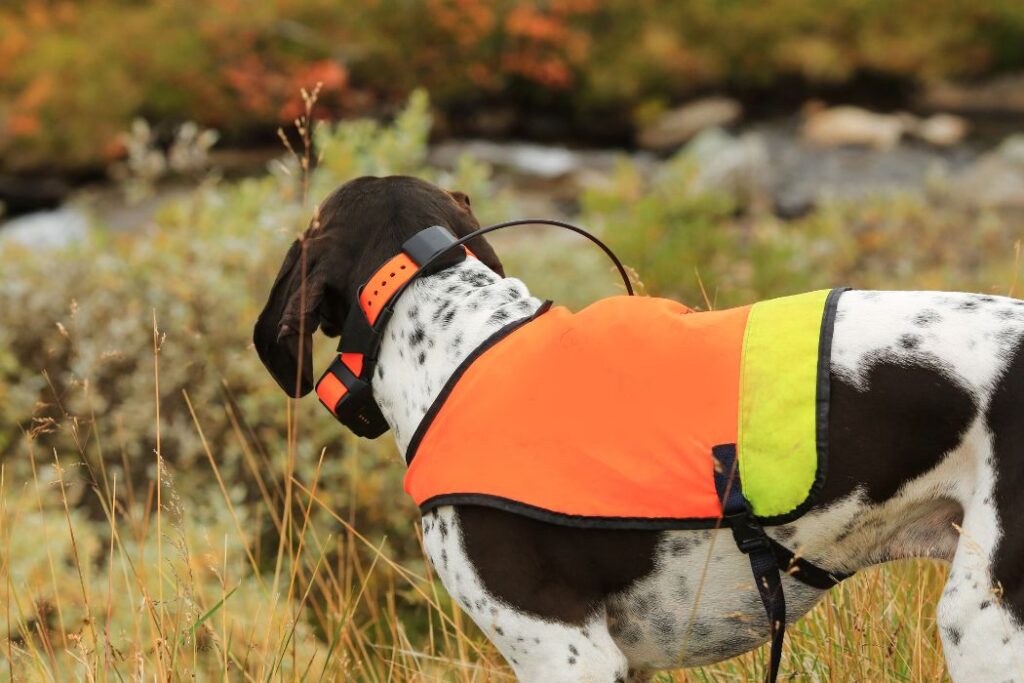
Speaking of identification, using a GPS tracker for your dog can provide added security. It can help you locate your dog if they wander off or gets lost.
Some GPS trackers also have real-time tracking, geofencing, and alert notifications, which can help you keep tabs on your dog’s whereabouts.
That being said, GPS trackers should not replace responsible ownership. You should always watch your dog and ensure they are safe and secure when camping.
It would be great to test your GPS gear and practice camping before you go camping and see if and how it works. You can do so in your backyard or around the neighborhood. It would be best if you always were on top of assignments for dog camping gear like this.
Pro tip: don’t forget to bring extra batteries and check if you need to change them regularly.
Keep Parasites Away From Your Dog
This is mentioned above as advice on what to do when visiting the vet before the camping trip.
Fleas, ticks, and mosquitoes can be a problem for dogs, as they can cause discomfort, transmit diseases, and threaten your dog’s health.
However, accidents happen, and even if you did the vet examination and took all the precautions, there are a few more things you can do while camping:
- Keep your campsite clean
- Keep your dog away from tall grass
- Use insect repellent
- Clean your dog’s sleeping area often
- Check your dog regularly for parasites
You should do your best to give your dog adequate tick prevention. But if you suspect your dog has been bitten by a tick or has any other health issues, it’s best to consult a veterinarian as soon as possible.
Use a Dog Collar That Glows in the Dark
A glowing collar will help track your dog’s location at night, providing extra visibility. This can be especially important if you’re camping with dogs in an area with limited visibility or hiking trail in the woods.
This collar will also make your dog visible to other campers and hikers, reducing the risk of accidental encounters or collisions.
Collars like this usually don’t cost much, yet they can be valuable items that may save your pet’s life.
Take a Lot of Photos of Your Dog
Taking regular photos of your dog when camping is a good idea for extra safety, especially if you’re camping in dispersed camping areas or an unfamiliar environment. Recent photos of your dog can help if lost or separated.
You can use these photos to create posters or share them with local authorities, state park rangers, or other campers who can assist in the search for your pet if needed.
This will also help you record their appearance and any distinctive markings, which can be helpful if they need veterinary care.
Another reason to do this is always to have the most accurate last-seen point on trails, and this can help you realize when was the last time you saw your dog and where exactly.
Bring Your Dog’s Documents With You
Having your dog’s health records on hand can be important in an emergency or if you need to visit a veterinarian while camping.
Your dog’s documents will contain information about their vaccinations, medical conditions, and any medications they might be taking.
This is also a way to prove ownership which most campsites will require dog owners to have. And also, if you’re traveling between the states, you may need to provide proof of your dog’s health certificates.
Advance Your Training Commands

Training your dog to respond to basic commands such as “come” or “stay” will ensure their safety while camping. It will prevent them from wandering off or getting lost.
But not only that. As many campsites require leashing and controlling your pet, these commands will be handy.
Investing time and effort in proper training will result in a great camping experience for everyone and improve your dog’s behavior, affecting your overall relationship.
Try out a Dog Whistle
A dog whistle is a small device that emits a high-pitched sound audible to dogs but not humans. This is a great training tool you can bring to your camping adventure.
It’s important to note that not all dogs will respond to a dog whistle, and some may find it uncomfortable or even frightening.
So, make sure to give it a go before you end up in the wilderness with a scared dog.
Watch Out For the Harmful Flora
Certain plants, flowers, and trees can be toxic to dogs and cause serious health issues if ingested. Some common harmful plants to look out for include:
- Poison Ivy, Poison Oak, and Poison Sumac
- Foxglove
- Azalea and Rhododendron
- Mushroom
- Nightshade plants
To be safe, research the plants where you plan to camp and familiarize yourself with the symptoms of plant poising in dogs.
Essential Dog Camping Gear
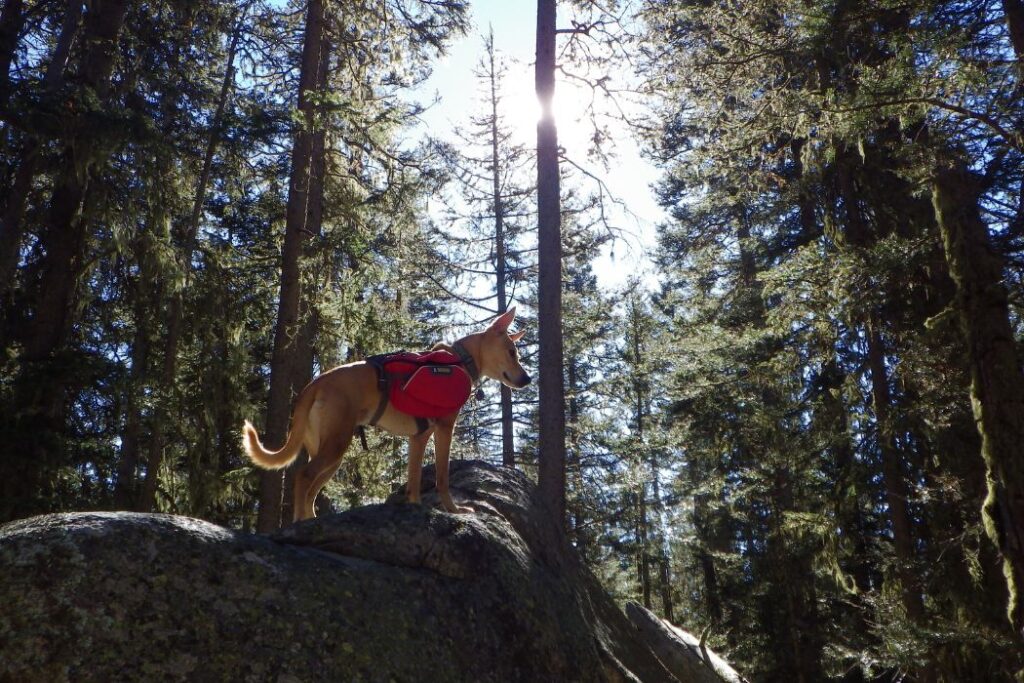
Get Dog Sleeping Bag
Dog sleep is equally important as ours, as they need proper rest. If you keep your dog entertained, you will exhaust them properly, so you must provide enough dog food and quality rest.
It is usually made of cozy materials like fleece or microfiber and shaped like a bag or blanket the dog can snuggle into.
This is a great tip to ensure you and your dog have the most amazing time. This tip is helpful for smaller dogs who can easily fit in tents and sleeping bags.
Buy Your Dog a Pair of Boots
Dog boots are essential when camping. These can be excellent protection for their paws. Imagine if you would walk the rocks barefoot.
Boots are a unique, multi-purpose protection:
- Protection from rough terrain
- Protection from hot surfaces
- Improved traction
- Protection from parasites
Since most dogs aren’t fans of boots, give them time before your camping trip to get used to them. You can start by putting them on for short periods and gradually increasing the duration.
DIY Zipline Leash For Dogs
This is an important piece of dog camping gear: a tie-out system that allows your dog to roam freely within a designated area while still being safely secured. Imagine your dog having the same freedom as at a dog park.
It is commonly used on campsites due to leash laws and in other outdoor areas where dogs must be controlled.
They are easy to set up and come in various lengths. The only thing to look for is to regularly check the leash for any signs of wear or damage and to replace it if it becomes worn or frayed.
Bring a Tent Big Enough to Fit Your Dog

When tent camping with dogs, choosing the right size tent is essential to ensure that your pet has enough room to be comfortable and that you’re both well protected from bad weather if needed.
You should consider a few factors when choosing a tent: the size of your dog, the number of people, climate, and campsite regulations.
Choose a tent where you and your dog can move around, with enough room for your pet to lie down and stretch out. If you’re unsure what size tent you need, speak with a camping or outdoor gear specialist who can present you with a good store offer.
Secure a Dog’s Leash With a Spiral Dog Leash Anchor
This small yet valuable object can secure your dog’s leash to a solid object, such as a tent stake or a tree. The leash is spiraled around the anchor, making it difficult for the dog to pull away.
Spiral dog leash anchors are often used when camping with dogs, as they provide a secure way to keep your pet safely contained while still allowing them to move around.
Dress Your Puppy Well
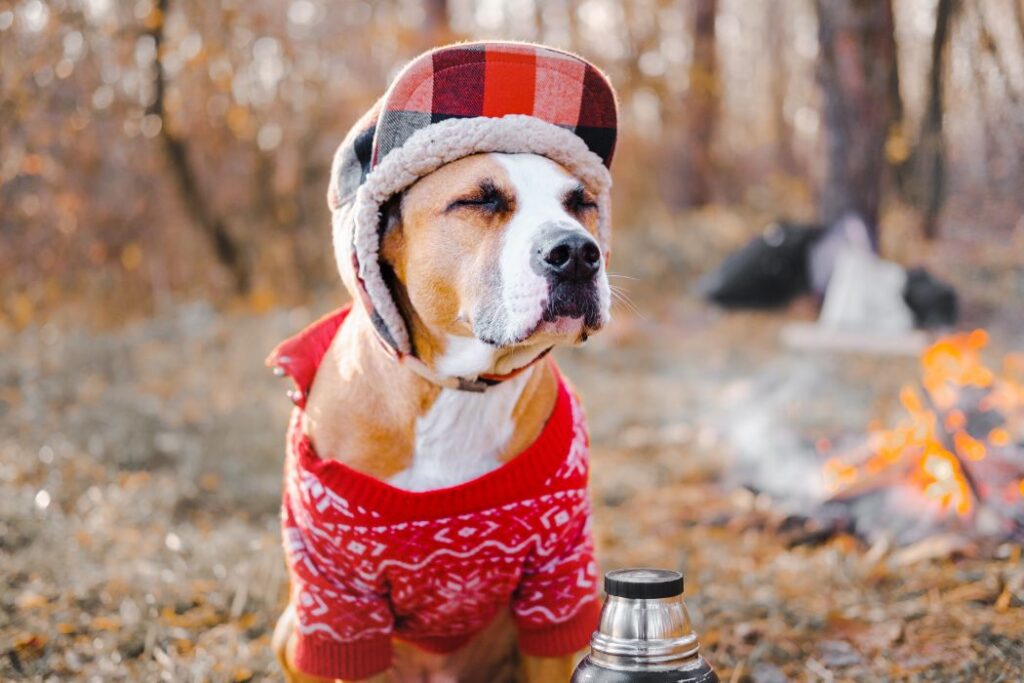
When camping with your dog, keeping them warm is essential, especially in a cold climate.
Some items you can provide for your dog are:
- Dog coat
- Sweater
- Boots
- Fleece jacket
Any clothes you choose for your dog should fit them well and allow free movement. Consider your dog’s breed and hair type, as some dogs may not need extra clothing if they have thick fur in cold weather.
When you ensure your dog has dressed adequately for adventure, check out our 10 tips on what to wear while camping and make sure you are as well.
Your Dog Can Also Carry a Backpack
Have you ever seen dogs camping around, carrying a backpack? It’s a thing. And yes, it’s a dog’s backpack designed especially for your four-legged friend. They are adorable but also pretty handy.
This is a convenient way to pack specific stuff for your dog, such as a water bottle, but it’s vital to properly acclimate your dog to the carrier before taking them on a long hike or outdoor adventure.
It’s the same as boots: start with short trips and gradually increase the length to help your dog get used to the carrier.
And Never, Ever Forget the Treats
Treats are always a good idea, but it is a great way to reward your dog for good behavior and motivate them during long hikes.
They can also distract your dog if they become anxious or stressed in new environments or circumstances.
Also, they love it, so why not bring it with you and make camping with your dog even more amazing?
Helpful Hygiene Tips and Tricks
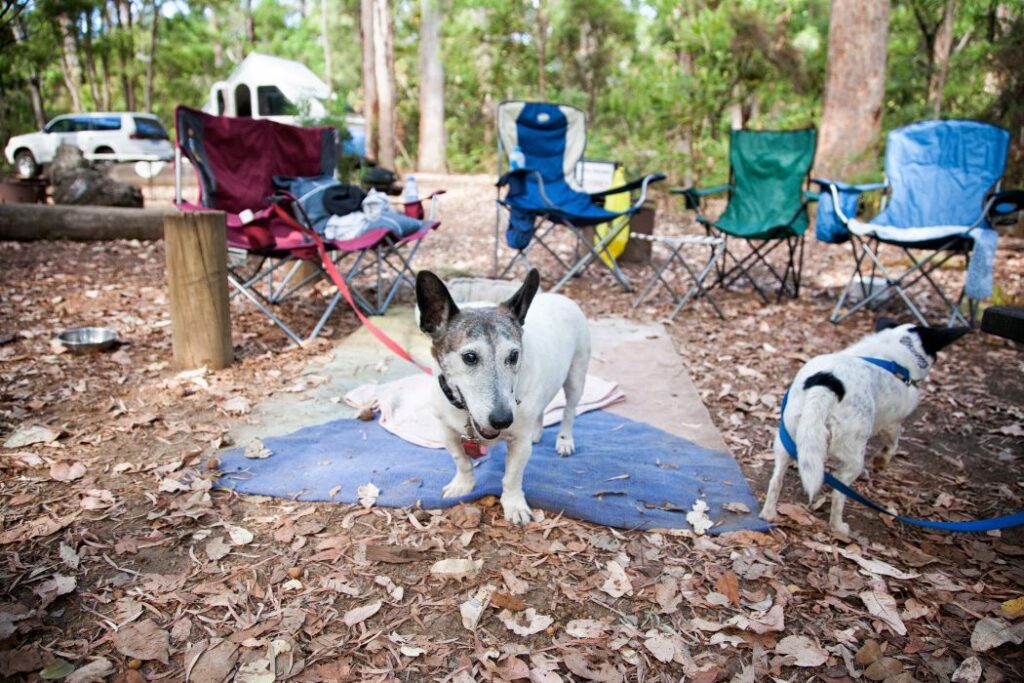
Get Some Pet Wipes
Pet wipes can clean your dog’s paws and fur after a muddy hike, freshen up their coat after a swim or clean any dirt or debris they may have picked up while exploring.
The most important thing about pet wipes is the ingredients. Look for those that are made with natural, gentle ingredients that are safe for your dog’s skin and fur. Avoid wipes with harsh chemicals or fragrances that can be irritating.
Besides the wet wipes, you can bring grooming supplies such as a brush, comb, and shampoo if you have the space.
Pack Enough Poop Bags
Bring a small shovel and dig your dog’s waste just as you do with yours.
But let’s be clear, taking poop bags with you might be a bit easier, especially if you visit campsites. Leaving dog waste is not acceptable.
It’s an essential responsibility for pet owners, not just basic cleanliness and hygiene. Always follow Leave No Trace principles and pack out all waste, including your dog’s.
Be aware of bringing enough bags with you, as well as a proper disposal container for dog waste. Additionally, follow local laws and regulations regarding pet waste disposal in your camping area.
Bring a Travel Dog Shower to Properly Wash Your Dog
This device will help you wash and clean your dog while moving around in nature or in an RV.
It typically consists of a water container, a pump or spray mechanism, and a showerhead or nozzle to direct the water.
These can be useful when traditional showers or baths are unavailable, such as when camping with your dog in a remote location or on the go.
Of course, your dog should be familiar with it and acclimated to it before you use it during the camping trip. If your dog doesn’t like to be bathed or sprayed with water, you should consider another solution, such as the wet wipes mentioned above.
High-absorbency Towel Will Make a Difference
A regular towel won’t ever be equally valuable, as it is designed for humans with less hair than dogs.
A blanket or sleeping pad for rest can also come in handy, or raincoats to keep your dog warm and dry in case of sudden rain. You can even find a comfy dog bed or sleeping bag in plenty of camping stores.
But I never thought a lot about it until I saw a few people using it. And I’ve realized it makes sense. These towels are much more durable due to their higher quality materials and the fact that they are sturdy and can resist frequent washing.
Investing in a real dog bed and dog sleeping bag is even better.
Layer Your Tent With Anything You Can Use
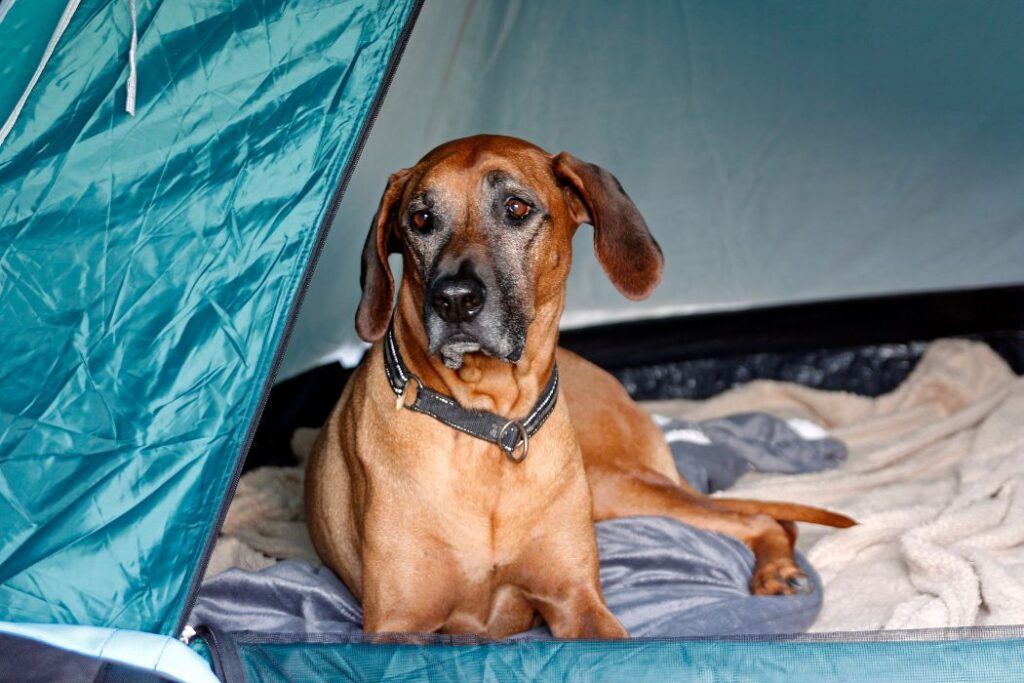
If you’re car camping, try packing more blankets or towels. You can layer your tent using them to help increase the insulation and warmth of your tent in cold weather conditions.
Each additional layer will provide your dog with more comfort and extra cushioning, reduce heat loss, and ensure a night of quality sleep.
But consider the weight and volume of your sleeping gear, as these items can increase it. However, you can quickly bring enough gear if you’re car camping.
Try packing only selected and much-needed blankets. Or buy a sleeping bag for your dog that’s light to carry around.
What’s Next?
In conclusion, camping with dogs is a fantastic way to spend quality time together, build relationships, and make your dog a happy little doggie. Camping with dogs is becoming increasingly popular; gear and available advice on the topic have increased.
Consider regulations if you’re visiting a campground or a national park.
Good preparation and the right gear make the camping trip an unforgettable memory for you and your pet. If you read the campsite instructions, make a big enough dog pack of food and water, ensure you can keep your tent warm, and have a checklist not to forget any of these, you’re on the right path.
New trails are waiting for you to explore it! Whether you’re new to it or have some or a lot of experience, it’s never too much to hear another set of camping tips.
Always remember to keep yourself and your dog safe at all times and to bring enough treats!
Have you been on a camping adventure with your dog, and what’s your experience? Drop us your stories in the comment below; we would like to hear from you!
-
Aleksandar is a 29-year-old outdoor enthusiast with 10+ years of experience in camping and hiking. He found the Bored Adventurer because he loves spending his free time exploring the wilderness and sharing his experience with other fellow outdoor enthusiasts. Whether it’s the mountains or the seaside, summertime or winter, he jumps at every chance to escape the city and return to nature. His other interests include photography, digital marketing, and film.
View all posts



